I am learning HashSet-s and I can't quite understand how they build their tables. Every article I read talks about % hash set function, which seems to imply that should I add several small numbers (ints) to a HasSet (say 1, 7, 14) and then add a large one (say 2732780) - the table for the HashSet will immediately grow to an enormous size with tons of empty cells. Am I correct? If not, in what form are numbers/elements stored then? Where can I read about this in detail?
UPDATE: So to clarify:
say my hash function is x = (input / 10), y = (input % 10), this means in my example above, while you are adding 1, 7 and 14 the HashSet build the table like so:

The question is, what will happen if I add 2732780? The table should explode right? And have tons of empty numbers?